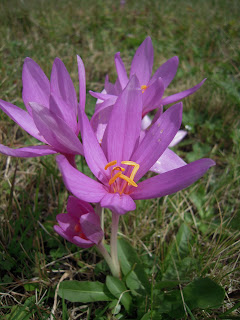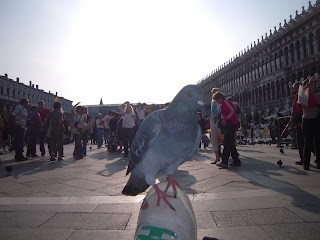Have you ever wondered what the difference is between Dolomite Lime and Garden Lime? I am on my latest horticultural pilgrimage, this time high up in the Italian Alps in a region of the Dolomites called Alta Badia.
Passing an open cut mine, quarrying the characteristically white rock, the penny dropped as to why the product we all sell in our garden centres is called Dolomite Lime. The colour was the first give away, which lead me to conclude that the rock was rich in calcium. Further researching revealed that Dolomite rock is comprised of stratified calcium magnesium carbonate. This means that the crushed composite, unique to this part of the world, is a rich source of calcium with traces of magnesium, providing essential elements to sweeten the garden soil – turning an acid soil neutral. Garden Lime essentially does the same thing, minus the trace magnesium.
The Dolomites has some of the most spectacular alpine flora in the world. I have seen photos of the amazing colourful displays put on in Spring, but even now at the end of Summer, there is plenty of interest about. The lower ecological zones on the side of the mountains yields cultivated meadows where Colchicum autumnale have begun to shoot through, carpeting the recently cut fields a lilac purple. Also found amongst these meadows are Dandelions (Taraxacum officinale) and soft pink flowering Geranium sanguineum, Trifolium pratense, Knautia arvensis, Cirsium sp. and many more.
Surrounding the cultivated meadows, and sprawling further up the sides of the steep mountains, a complex forest environment thrives where coniferous plants dominate. Larix decidua is one of the more common species, which being one of few deciduous conifers, turns orange in autumn, contrasting spectacularly against the dark evergreen Abies, Juniperus and Pinus species. Beneath these large trees lies many more flowering plants including the hot pink tall spiked Epilobium montanum (widespread throughout the alps, and a weed in the UK), dark purple Prunella vulgaris, yellow daisy like Arnica montana, bell shaped Campanula scheuchzeri, deep blue Gentiana asclepiadea and white-green flowering Silene vulgaris with their characteristic deeply veined inflated calyx.
Higher up the mountain the flora changes as you head into scrubbier zones where dwarfed (to 2m) Pinus mugo dominates the subalpine regions. Heading higher into the alpine zones, where rock formations and vertical ascents begin, rarities such as Eidelwiess (Leontopodium alpinum), Devils Claw (Physoplexis comosa) and the vivid blue Round Headed Rampions (Phyteuma orbiculare) thrive in localised pockets. More common to this alpine zone are small yellow flowering alpine Poppies (Papaver alpinum ssp. rhaeticum), the tiny light purple columbine shaped flower with orange centre of Linaria alpina and the dull fuchsia coloured flowers of the German Gentian (Gentianella germanica). In the smallest of crevices in the most harsh rock faces one comes across Saxifraga caesia growing in tight clumps against the rock where moisture is derived from the mountain air.
While I instinctively am attracted and become overloaded on the minute alpine flowers which are found in the most remote places of the mountains, the flora is disputably not the only attraction here. The region is most famous for its place in the First World War where Austria and Italy battled here in the mountains. There are old forts carved into the rocks and stone trenches found all over the mountains. As the clouds roll in late afternoon, and you are walking through thick mist, the ruins adds a unique eeriness to the region, and it makes you appreciate the privilege of walking through not only an area rich in unique flora and fauna, but also a living museum.
Text and Photos by Anthony J Curnow


























